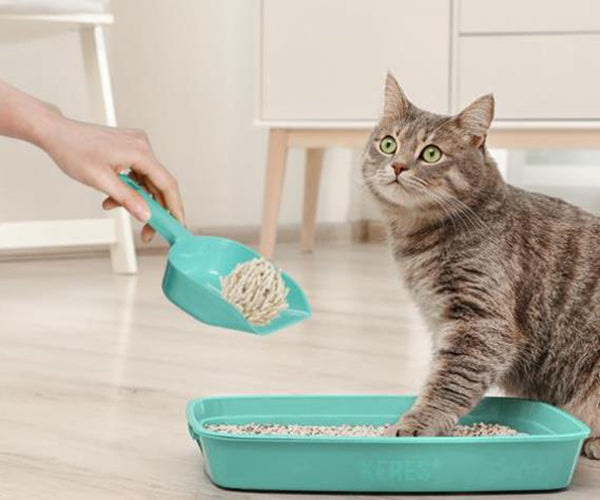
How do I train my cat to use the litter box?
Training a cat to use a litter box is a process that requires patience and the right approach. Here are some specific steps and suggestions to help your cat develop good excretion habits:
First, the preparation stage
Step 1 Choose the right litter box
- Size: The litter box should be large enough to accommodate the cat to turn around and dig. In general, the length should be about 1.5 times that of the cat from head to tail.
- Depth: The depth of the litter box should be moderate, so that the litter is not easy to overflow, and the cat can easily get in and out.
- Type: There are open, semi-closed, fully closed litter boxes on the market to choose from. It is recommended to choose a type that is easy to clean and suitable for your cat's preference.
- Location: The litter box should be placed in a quiet, secluded but easily accessible location, away from your cat's food and water sources to reduce disturbance and odors.
2. Choose the right litter
- Choose a cat litter that absorbs water well, is easy to clean, and is odorless to provide a comfortable and hygienic environment. Some cats may have a preference for a particular material of litter, and try different types to find the one your cat likes best.
Second, the guiding stage
1. Familiarize yourself with the litter box
- Bring your cat to the litter box and let it smell the litter to familiarize itself with the presence of the litter box. You can gently pat the edges of the litter box to help your cat establish awareness of the litter box.
2. Observe your cat's behavior
- Pay attention to your cat's excretion habits, usually they will need to excrete after eating, after waking up or after playing. When your cat shows behavior looking for a place to dump (such as pawing, wandering, etc.), immediately direct it to the litter box.
3. Guide your cat to use the litter box
- When your cat is about to start excreting, gently pick it up and put it in the litter box. If the cat resists or tries to flee, don't force it, but wait patiently for the next opportunity.
- Help your cat understand the purpose of the litter box by gently teaching it to imitate the burial movement with your fingers.
Third, reward and reinforcement
1. Reward promptly
- When your cat successfully defecates in the litter box, immediately give praise and rewards such as vocal praise, a small snack or a loving touch. This can create positive associations and make your cat want to continue using the litter box.
2. Repeat
- Patience and repetition are required during training. Even if your cat has learned to use the litter box, there may be occasional mistakes. In this case, instead of punishing the cat, continue to guide it back to the litter box and reinforce the correct behavior.
Fourth, precautions
1. Keep the litter box clean
- Regularly clean the litter box of lumpy litter and feces to keep the litter dry and clean. Cats love to use a clean litter box, so keeping it clean is crucial for successful training.
2. Avoid overreaching
- Avoid excessive interference with your cat's natural behavior during training. Getting the cat to get used to the litter box and discover its convenience for themselves is key.
3. Keep an eye on your cat's health
If your cat frequently ignores the litter box and defecates elsewhere, there may be a health problem (such as urinary tract infection, bladder stones, etc.). In this case, a veterinarian should be consulted promptly and a health check should be performed.
With the above steps and recommendations, most cats will be able to learn to use the litter box and develop good excretion habits. It is important to note that every cat is a unique individual and may take different times and methods to get used to the litter box. Therefore, it is very important to be patient and open-minded during the training process.
